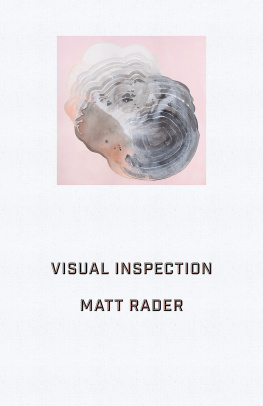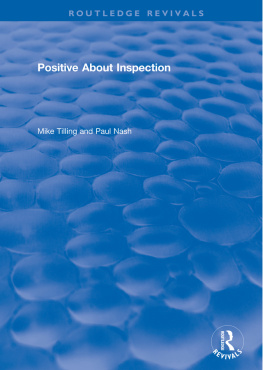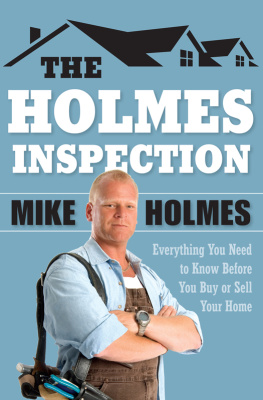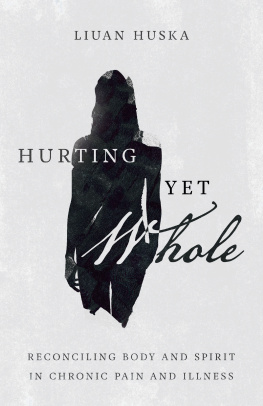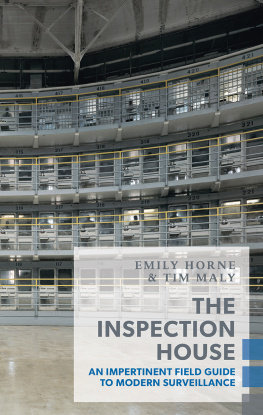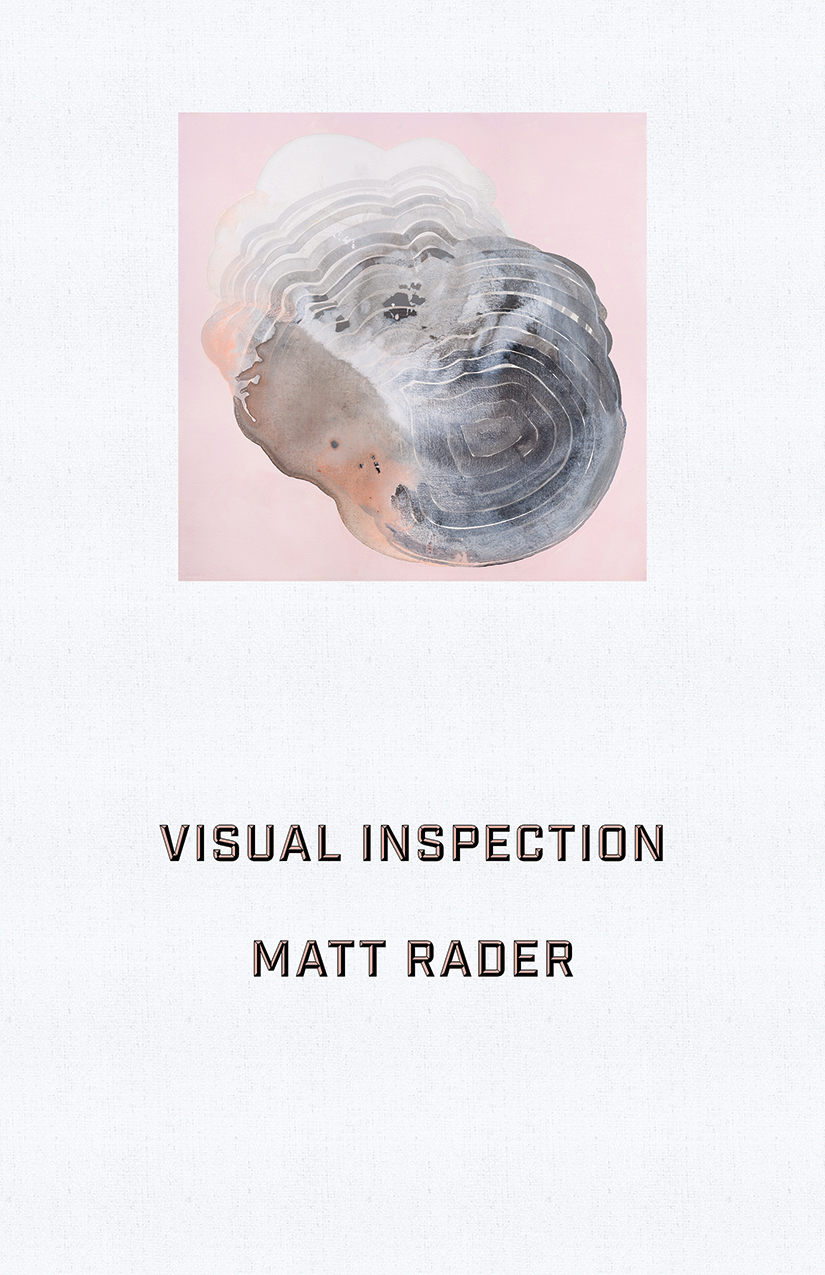Visual Inspection
Visual Inspection
Matt Rader


2019
Copyright Matt Rader, 2019
all rights reserved . No part of this publication may be reproduced, stored in a retrieval system or transmitted, in any form or by any means, without prior permission of the publisher or, in the case of photocopying or other reprographic copying, a licence from Access Copyright, the Canadian Copyright Licensing Agency, .

Nightwood Editions
P.O. Box 1779, Gibsons, BC , v0n 1v0 , Canada
www.nightwoodeditions.com
editor : Amber McMillan
cover art : Katie Brennan
cover design & typography : Carleton Wilson



Nightwood Editions acknowledges the support of the Canada Council for the Arts, which last year invested $153 million to bring the arts to Canadians throughout the country. Nous remercions le Conseil des arts du Canada de son soutien. Lan dernier, le Conseil a investi 153 millions de dollars pour mettre de lart dans la vie des Canadiennes et des Canadiens de tout le pays. We also gratefully acknowledge financial support from the Government of Canada and from the Province of British Columbia through the BC Arts Council and the Book Publishing Tax Credit.
This book has been produced on 100% post-consumer recycled, ancient-forest-free paper, processed chlorine-free and printed with vegetable-based dyes.
Printed and bound in Canada.
Library and Archives Canada Cataloguing in Publication
Title: Visual inspection / Matt Rader.
Names: Rader, Matt, 1978- author.
Identifiers: Canadiana (print) 20189047968 | Canadiana (ebook) 20189047976 | ISBN 9780889713567 (softcover) | ISBN 9780889711440 (ebook)
Classification: LCC PS8585.A2825 V57 2019 | DDC C818/.6dc23
for Elisa, who got me looking
&
for Jordan and Carmen, who showed me the way
Table of Contents
if youll let a guide direct you
who only has at heart your getting lost
Robert Frost
I respectfully acknowledge the syilx / uknaqin people on whose traditional and unceded territory we conducted this research and art-making.
Introduction
I was born with difficulty breathing. Doctors guessed cystic fibrosis. They were wrong. My first memory is of being in hospital. Several internal organs were enlarged; they were testing for cancer. Rows of cribs. Large hands. Wires and machines. I was less than a year old. I did not have cancer. My mother carried me, blue and gasping, into the Emergency Room more times than she can recollect over those first three years. At four, when we moved from the city to a small fishing village on Vancouver Island, my mum insisted on a house within minutes of the hospital. 1980s. Wed go to the hospital in the evening. Theyd shoot me with adrenaline. After, in the late hours of the night (it is always night in my memory), my eyes wide, my heart racing, Id dash through the house, careening off the wainscotting in the basement, jumping from the back of the good couch, collecting myself from the carpet, from the linoleum, full of the drug our bodies produce when we most fear for our lives. I dont remember fearing for my life. I imagine the nurses and doctors feared for my life. In saving my life, they injected that fear into my body. Literally.
I know my mother feared for my life. She spent the first eighteen years helping me seek an answer. We searched daily. We accepted some stories. We rejected others. Nothing explained what happened with me beyond the idea of hyperactive immune responses to my environment. To my emotions. All treatments addressed symptoms, nothing else.
When I took over the search in my twenties, my largely inexplicable medical history continued to accumulateI had the rarest form of appendicitis the weekend my mum moved from my childhood home after her divorce; I saw five specialists to address why half my lip had been swollen for a year (Guess what the answer was? No answer); and I did trials of breathing medications for three years, measuring the peak flow of my breath four times a day, every day. By the time I was thirty I was wracked by pervasive and debilitating pain.
Sometimes searching for something guarantees youll never find it. Sometimes what you are looking for obscures what it is you find in your search; you have to see not what youre looking for but what is there.
Pain is different from suffering. Pain is a condition of the physical body. It can be assuaged, or it cant. To suffer is to insist, emotionally, that things be different, to refuse clarity. Be whole beyond confusion, Robert Frost writes in Directive, the poem from which Ive borrowed the epigraph to this book. In that poem, to return to a place that no longer exists, and to become whole again, can only be achieved by getting lost. Though many people in pain suffer, this is the basic difference between pain and suffering: clarity or confusion. To be sure, clarity can, often does, increase pain; but it relieves suffering.
Ive rarely suffered from my health. Ive even more rarely written about it explicitly. My health, in all its qualities, good and poor, is a basic fact of my life and indistinguishable from my existence. Where do you locate health in your body? Easier to ask where you locate poor health? Curious that only certain qualities of health seem to assert themselves on the conscious level. In my writingin my poems specificallyIve always felt my healthmy bodyas a silent, invisible, but active presence; it is there because the materials of the poemsthe languageare sifted through my body. I didnt know how to make it explicit and I didnt feel a need to.
Robert Pinsky writes, in The Sounds of Poetry, that the instrument of the poet is the breath of the reader. And if the poet is the first reader, as Paul Muldoon asserts in The End of the Poem, the poets breath is the instrument of composition. If you listen, you can hear Charles Olson in the hazy Blue Ridge Mountains sighing wearily, I told you so.
The world is experienced through our bodies. Our ideas are formed less than wed like to admit through intellect; we have feelings (or experiences, as T. S. Eliot would have it) and through them we arrive at what we say we know.
From 20152017, I conducted a research-creation project at the University of British Columbia Okanagan called Visual Inspection. Research-creation is the term the Canadian academy uses to describe academic research projects with artistic outcomes. Though dressed up as academic inquiry, Visual Inspection was always, first and foremost, an art project conducted by artists.
Originally, the project asked a basic question: If the page is a field of visual composition in contemporary poetryand it is such a fieldhow can we as poets make this field available to non-visual learners in a manner that is consistent with our own individual aesthetic preferences? What would we make?
At first this seemed like a translation problem: How to account for the white space and typographic experiments in a poetic composition through audio or haptic renditions? Think recordings of poems read aloud, braille, or even poems printed in 3 D according to a particular algorithm. With this wrinkle: How to also appeal to the poet as a poet, to be consistent with the poets compositional practice, with the pleasure and realization of that practice?

